What Is RQD | Advantages of Rock Quality Designation | Limitations of Rock Quality Designation (RQD)
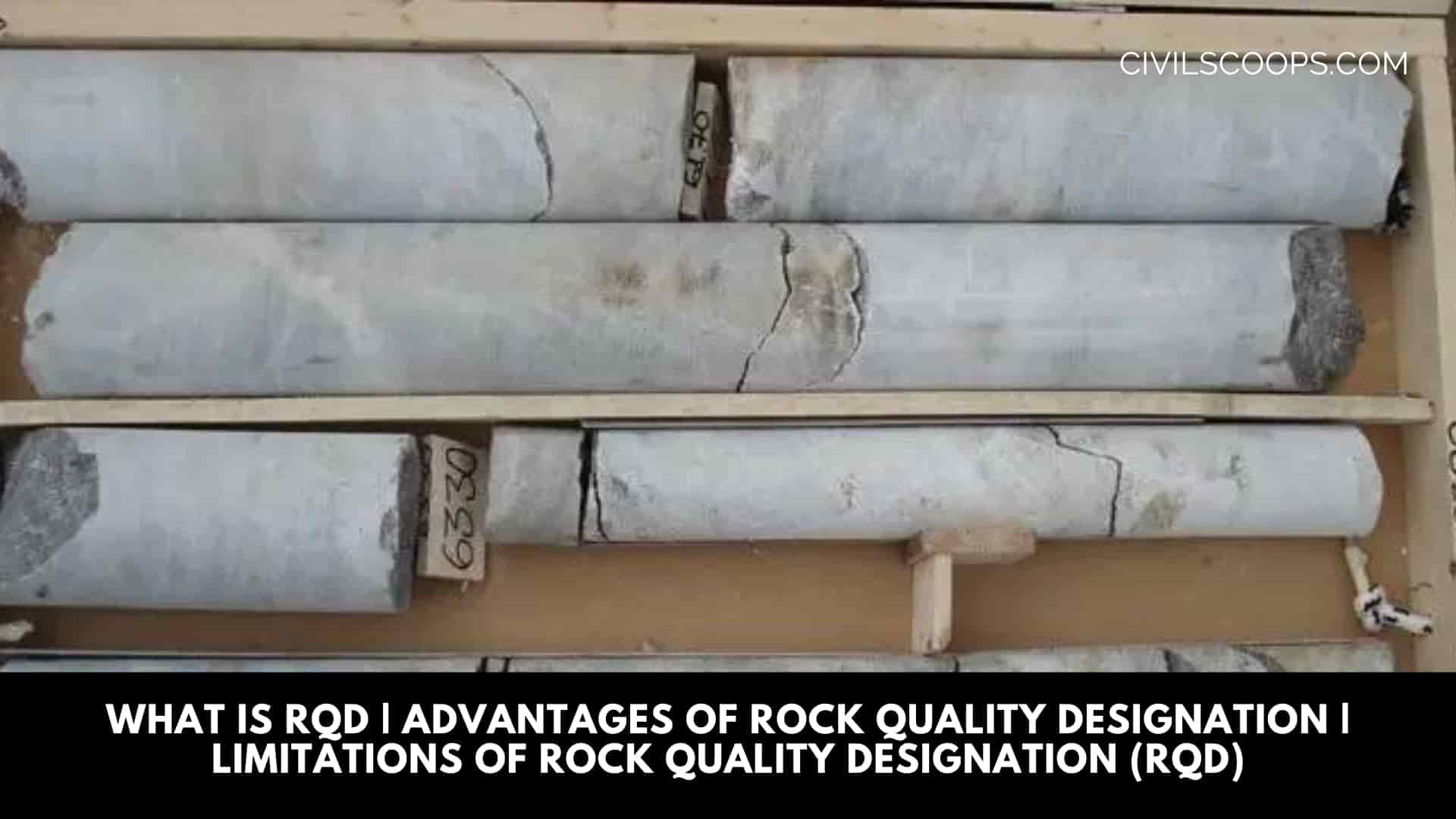
Table of Contents
Introduction of RQD
In Civil engineering, different parameters are used to characterize the Quality of the rocks. Evaluation of the Mechanical Properties of the rocks and Characteristics of rocks is one of the challenging parts of rock engineering.
Rock mass has wide applications in the construction of structures, excavation, and tunnels and in maintaining stable slopes.
Hence, there must be a perfect parameter that is used to evaluate the Quality and the Properties of the rock mass.
RQD is widely used as a crude indicator to evaluate the quality of Rock mass and its properties. In this article, you will get to know What is RQD and the method of Core Recovery calculation.
What Is RQD?

The full form of RQD is Rock Quality Designation which is a parameter used to measure the degree of jointing or fracture in the rock mass.
In simple words, the Rock quality designation is nothing but the measure of the quality of the rock which is obtained from the borehole.
It is generally measured as the percentage of the drill cover in the length of 10cm or more.
The Rock quality designation index was developed by Deere in the year 1964.
RQD (Rock quality designation ) signifies the degree of jointing or fracture in a rock mass measured in percentage, where RQD of 75% or more shows good-quality hard rock and less than 50% showed low-quality weathered rocks.
The pieces of Rock are considered which is of hard and good quality. The length of core pieces of Rock mass is measured along the centerline of the pieces
While measuring the index there should not be inconsistency in the measurement.
Also Read: 10 Construction Certifications and Where to Get Them
Core Recovery Calculation
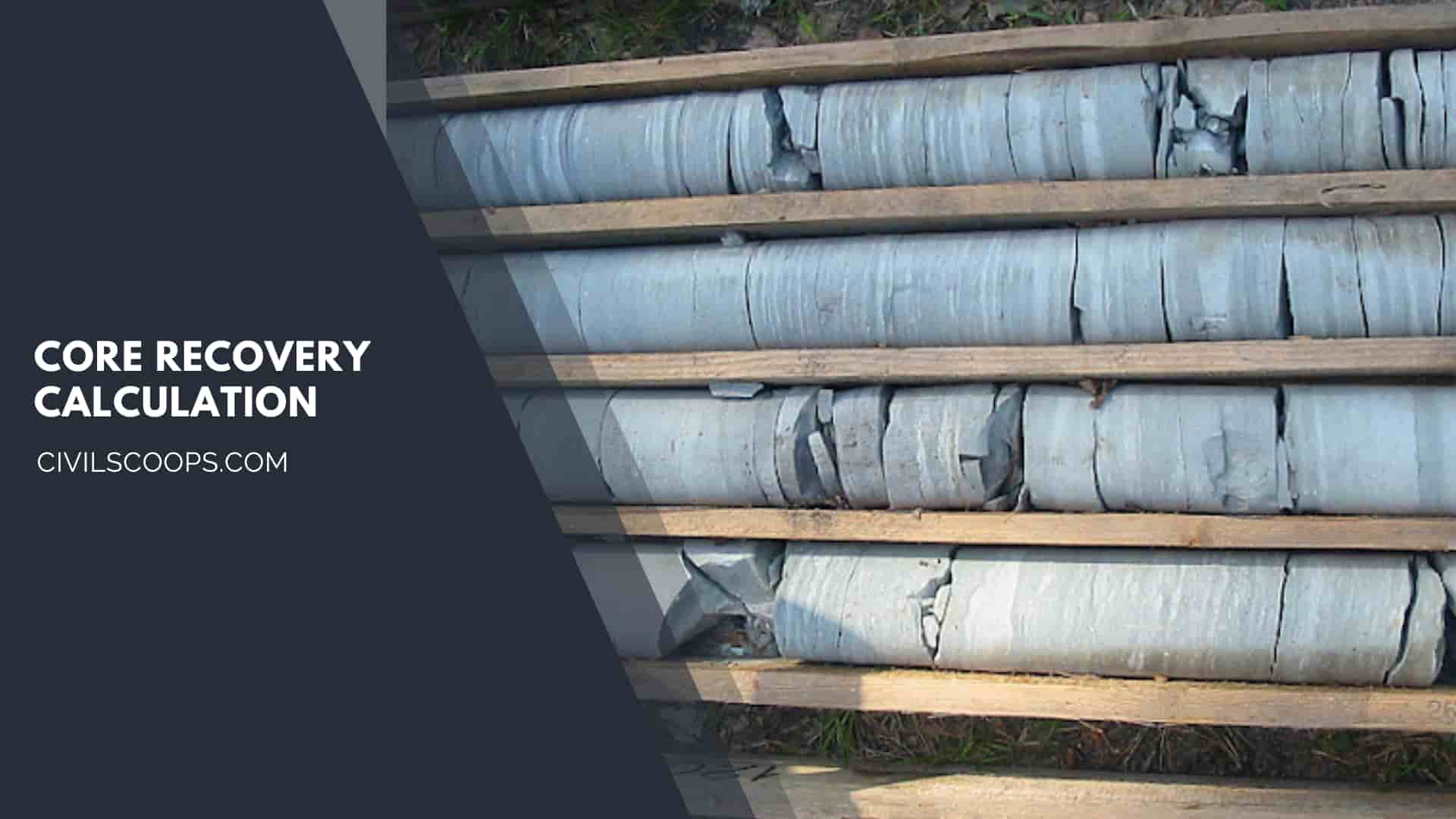
Core Recovery calculation is done by using the following formula
Rock quality designation is generally calculated by taking the sample of rock mass which is obtained from a borehole.
RQD =[(Sum of the length of core greater than 10 cm) X 100] divided by the total length of the core run
The Rock quality designation (RQD) is generally expressed in the Percentage (%).
In the rock quality designation, the surface is drilled at a certain depth, and with the help of the core property of the rock, mass is determined.
For the determination of Rock quality designation using core boring, the International Society for Rock Mechanics (ISRM) has recommended a core size of at least N X (size 54.7 mm) drilled with a double-tube core barrel using a diamond bit.
Condition of the Rock as Per There Rock Quality Designation.
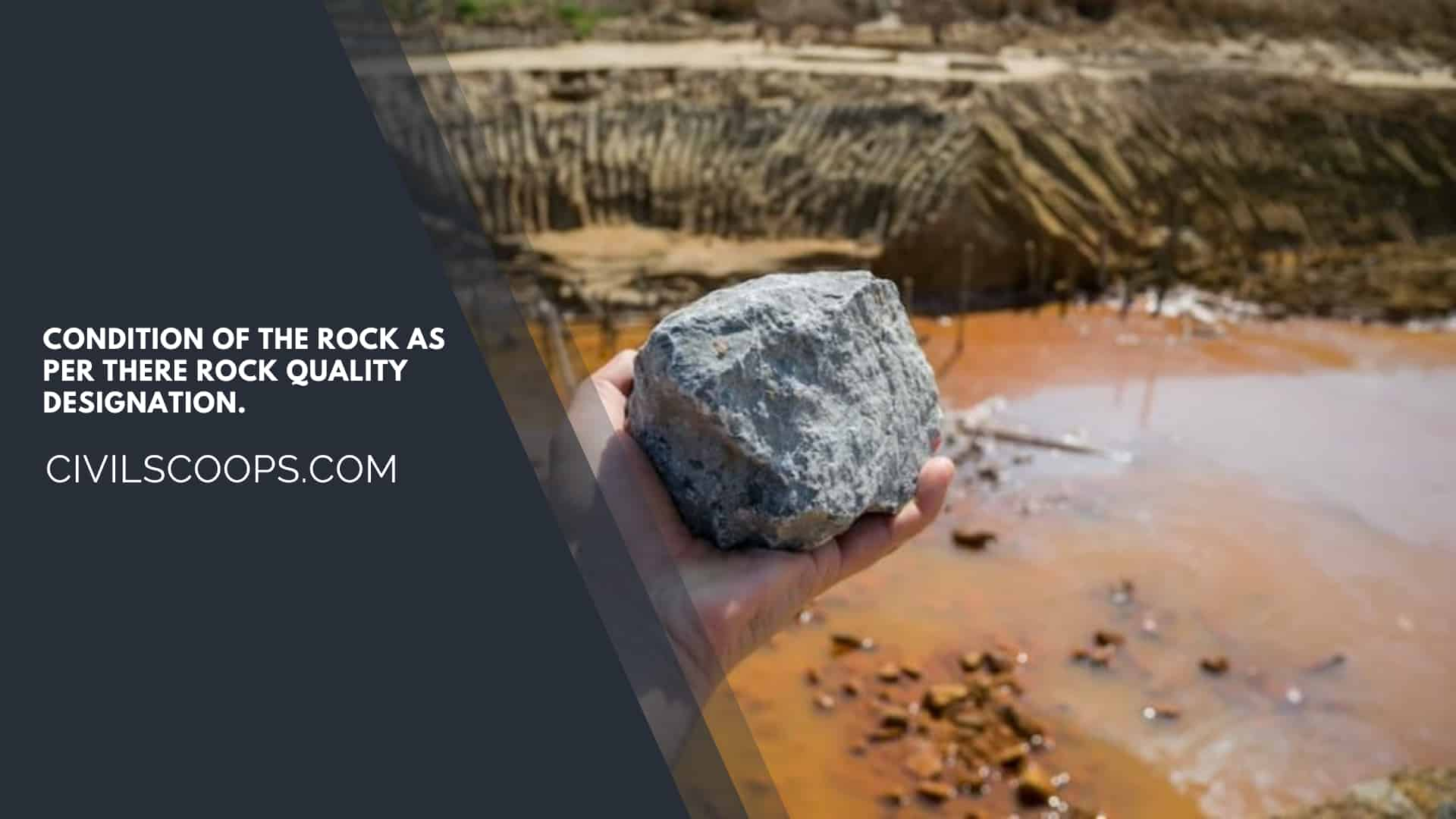
[su_table responsive=”yes” alternate=”no”]
| Condition of the Rock | RQD in % |
| Very poor completely (weathered rock) | Less than 25% |
| Poor (weathered rock) | 25 to 50% |
| Fair moderately (weathered rock) | 51 to 75% |
| Good (hard rock) | 76 to 90% |
| very good( fresh rocks) | 91 to 100% |
[/su_table]
The determination of rock mass strength using the technique of RQD can be performed in the field or the laboratory.
Determination of the deformation modulus and unconfined compressive strength of jointed rock masses is a crucial and challenging part of rock mechanics and rock engineering.
The empirical methods which are based on Rock Quality Designation provide a very convenient way to the estimation of the deformation modulus and unconfined compressive strength of rock masses.
In many cases, The Rock quality designation (RQD) is the only available data about the discontinuity in the routine site investigation.
RQD is the only factor that affects the deformability and strength of jointed rock mass.
Advantages of Rock Quality Designation
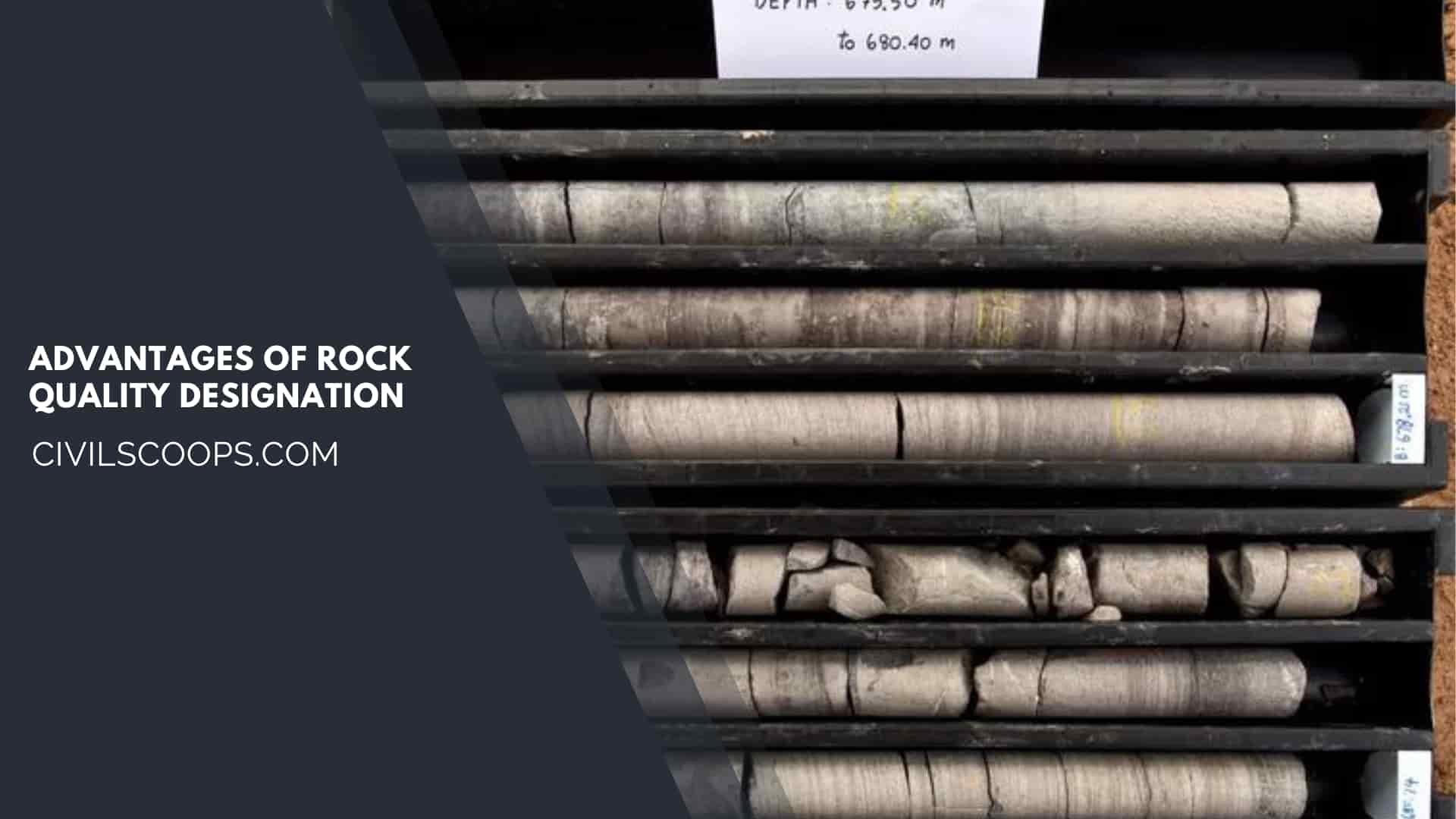
- Rock quality designation(RQD) is widely used to check the quality of rocks.
- This test helps to provide an assessment of the soundness of the rocks and the damages which occurred in the rocks due to the action of weathering.
- Rock quality designation(RQD) is also used to evaluate the zones of rock weakness and degree of jointing for fracture in a rock mass.
- It is used to determine the depth of the foundation and the Bearing capacity of the rock mass.
- Rock quality designation(RQD) is also used to identify the weak rock zones which are very important in the construction of heavy structures.
- The RQD has many applications in mining, engineering geology as well as geotechnical engineering.
Rock quality designation is also used to obtain the tunneling conditions.
Also Read: Civil Engineering Basic Knowledge
Limitations of Rock Quality Designation(RQD)
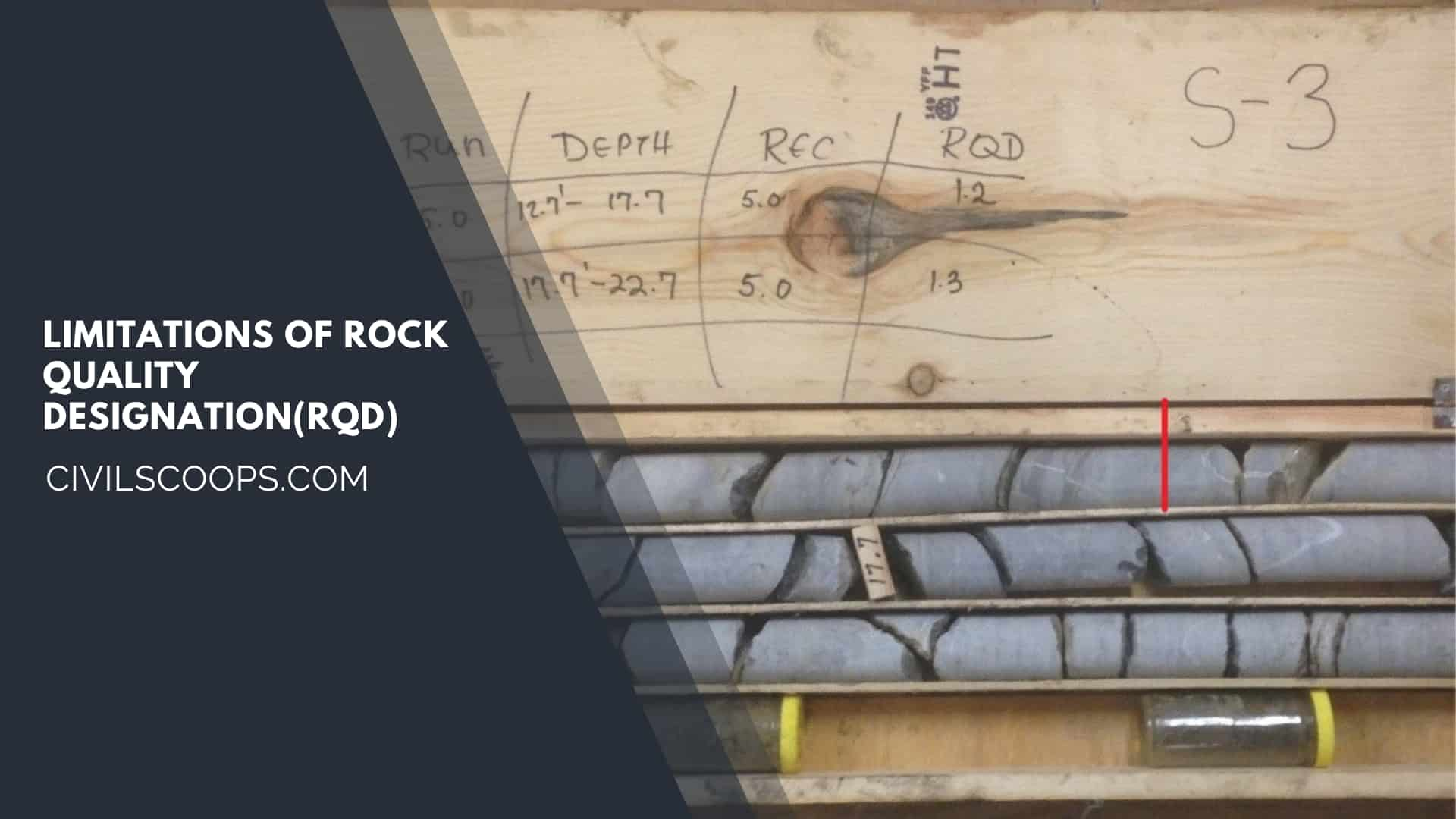
- The Rock quality designation has variable values depending on the direction of the run.
- Rock quality designation(RQD) does not give in information on the core pieces which are less than 10 cm.
- Rock Quality Designation gives wrong values where joints contain thin clay fillings or weathered material.
- Does not take direct account of joint orientation.
[su_box title=”FAQ” style=”default” box_color=”#333333″ title_color=”#FFFFFF” radius=”3″ class=”” id=””]
Rock Quality Designation
Rock-quality designation (RQD) is a rough measure of the degree of jointing or fracture in a rock mass, measured as a percentage of the drill core in lengths of 10 cm or more. High-quality rock has an RQD of more than 75% and low quality of less than 50%.
Rock Quality Designation Formula
RFQ is calculated by taking a rock core sample from a borehole and the lengths of all sound rock pieces which are a minimum of 100 mm long are summed up and divided by the length of the core run. Only those pieces of rock are considered which are hard and of good quality.
RQD Rock Quality
Rock Quality Designation (RQD) is a measure of the quality of rock core taken from a borehole. RQD signifies the degree of jointing or fracture in a rock mass measured in percentage, where RQD of 75% or more shows good-quality hard rock and less than 50% showed low-quality weathered rocks.
RQD Core Logging
The RQD should be logged on-site when the core is retrieved because some rocks can disintegrate, due to slaking, desiccation, stress relief, or swelling, with time. For these rocks, it is recommended that the RQD be measured again after 24 h to assist in determining durability.
RQD Calculation Example
Therefore, RQD = (640/1200)x100 = 53% which is fair quality rocks, i.e. rocks are moderately weathered.
RQD Index
The RQD index is an index of rock quality in that problematic rock that is highly weathered, soft, fractured, sheared, and jointed is counted against the rock mass. Thus it is simply a measurement of the percentage of “good” rock recovered from an interval of a borehole.
RQD Abbreviation
Rock-quality designation (RQD) is a rough measure of the degree of jointing or fracture in a rock mass, measured as a percentage of the drill core in lengths of 10 cm or more. High-quality rock has an RQD of more than 75% and low quality of less than 50%. Rock quality designation (RQD) has several definitions.
RQD Value
Rock-quality designation (RQD) is a rough measure of the degree of jointing or fracture in a rock mass, measured as a percentage of the drill core in lengths of 10 cm or more. High-quality rock has an RQD of more than 75% and low quality of less than 50%.
[/su_box]
[su_note note_color=”#F2F2F2 ” text_color=”#333333″ radius=”3″ class=”” id=””]
Like this post? Share it with your friends!
Suggested Read –
- 10 Construction Certifications and Where to Get Them
- What Is Hardened Concrete | Properties of Hardened Concrete
- What Is Plaster | Types of Plaster As Per Material | Defects In Plastering
- What Are Hollow Bricks | Advantage of Hollow Bricks | Disadvantage of Hollow Bricks | Sizes of Bricks Blocks | How to Make Hollow Bricks
- What Is Fire Escape Staircases | Types of Fire Escaping Stairs | What Is the Importance of Fire Escape in the Building | What Are the Fire Staircase Requirements
[/su_note]
Originally posted 2023-03-21 10:19:35.
